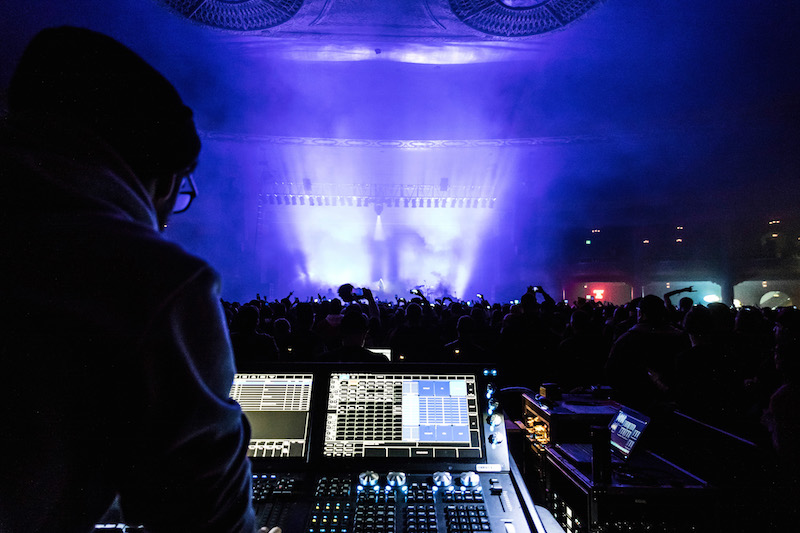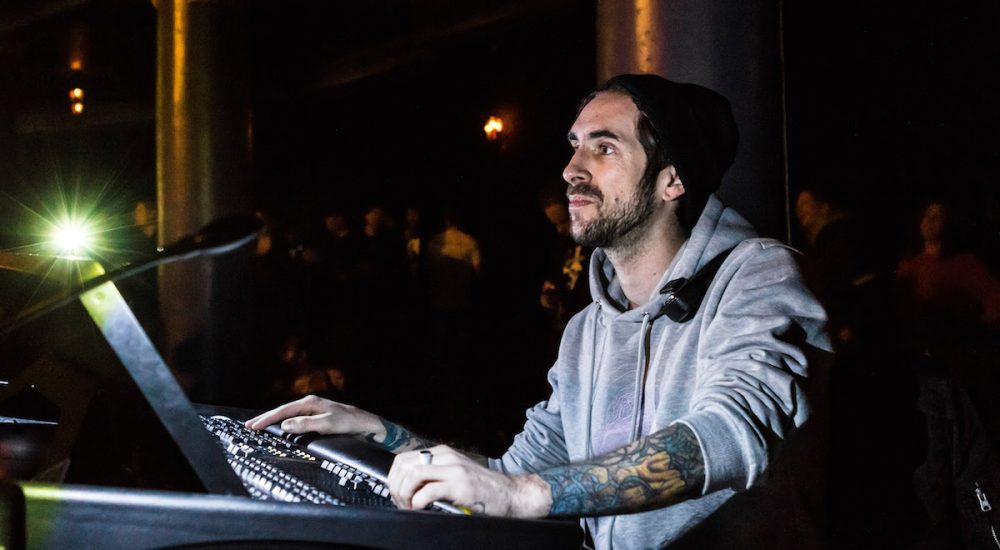Nico Riot’s Spontaneous Light
Posted on March 28, 2018
Photo: Dan Kazinski
Working for dark metal clients like Marilyn Manson and Gojira, French-born designer Nico Riot has mastered the art of improvisation. Much of the appeal of his fiercely irreverent clients comes from their penchant for going unscripted, and diving into uncharted musical waters with reckless abandon.
Riot’s lighting eagerly follows suit, reflecting his clients’ music with a bold, fresh spontaneity that keeps audiences on their visual toes. But being spontaneous does not mean being unscripted, as Riot is quick to point out. All of his shows are carefully thought out in fine detail and saved on cue stacks.
Of course, as the music flows, Riot reads and follows the moods of the artist on stage, and is ready to make sharp turns and do whatever it takes to keep his lighting in the moment. The co-owner of Chirac Design in Nantes, France, Riot now makes his home (at least temporarily) in the Los Angeles area. He talked to us about the spontaneity of light.
When you’re lighting an artist like Marilyn Manson who is known to make radical departures from his set lists, or stop in the middle of one song and move to another, it must put pressure on you to be able to change things up very quickly. How do you get yourself ready to make these quick changes?
“I have two different options. If we jump to another song, I have macros with ‘page change’ / ‘fade in for the overall look’ / ‘go master cue stack’ in it. Those macros allow me to jump from one song to another in a really smooth way. The second option is when my client is doing some radical changes. In that scenario, I have a busking page ready to go. I can use it and then go back to the song really easily.”
Do you busk or cue stack your shows?
“Every song is programmed in cue stacks — but no timecode at all.”
Do you prefer cue stacking to busking?
“Cue stacking is the only way for me to do a proper and consistent show. I wouldn’t be able to do a tour and try to recreate the same show on busking anymore.”
So, what is the key to using cue stacks effectively?
“Hmm… good question. I don’t know. I just try to make my life easy when it comes to daily updates. I use my console’s tracking options a lot and I guess that this is maybe a key for a well-programmed cue stack.”

Photo: Dan Kazinski
How and when do you create your cues?
“I usually build the show during programming sessions before hitting the road. I always try to improve little details here and there on the road when I have the real kit in front of me.”
Do you change the order of your cues often during a show?
“No, I don’t. Stacks follow every musical cue that I want to hit. So, if the structure of a song doesn’t change, I don’t have to make any changes. However, it happens on Manson shows, but then I just need to jump cues.”
Do you light the artist for physical signs that might indicate what he or she will do next?
“I always keep an eye on the artist, especially on Manson shows. He’s the maestro, so everyone (crew/band) have to follow his moves.”
You work for intense artists who are prone to quick changes in direction. Does this influence the way you put together your lighting rig? Are you more prone to select fixtures that are flexible, even if they are not exactly what you want in other respects?
“It’s really not a matter of how you use your fixtures as much as it is how you use your desk, I guess. But having just said that, I will tell you that having some versatile fixtures in your rig is a big help as well.”
Do you always go into a concert with a cue list?
“Yes — always with a cue list. The only exception was when I was working for a real time DJ’s band called Beat Torrent. Nothing was written down and everything was always subject to change. The only way to do it was busking the whole set and just going with the flow.”
What about busking – you don’t do it often anymore, but what do you think the key is to doing well when you do need to go that route?
“I would say the way you set up your desk. Organization is the key. You need to have a good overview of your workflow.”
You have designed some elaborate rigs. So, when you busk do you limit the fixtures that you focus on, or do you try to involve the whole rig in your busking?
“The whole kit is always involved. Busking is a ‘live emergency’ extension of the Cue lists stacks so if the palettes are good, everything is going to follow.”
Do you have to like a client’s music to do a good job lighting it?
“That sure helps a lot. You have to feel the vibe.”